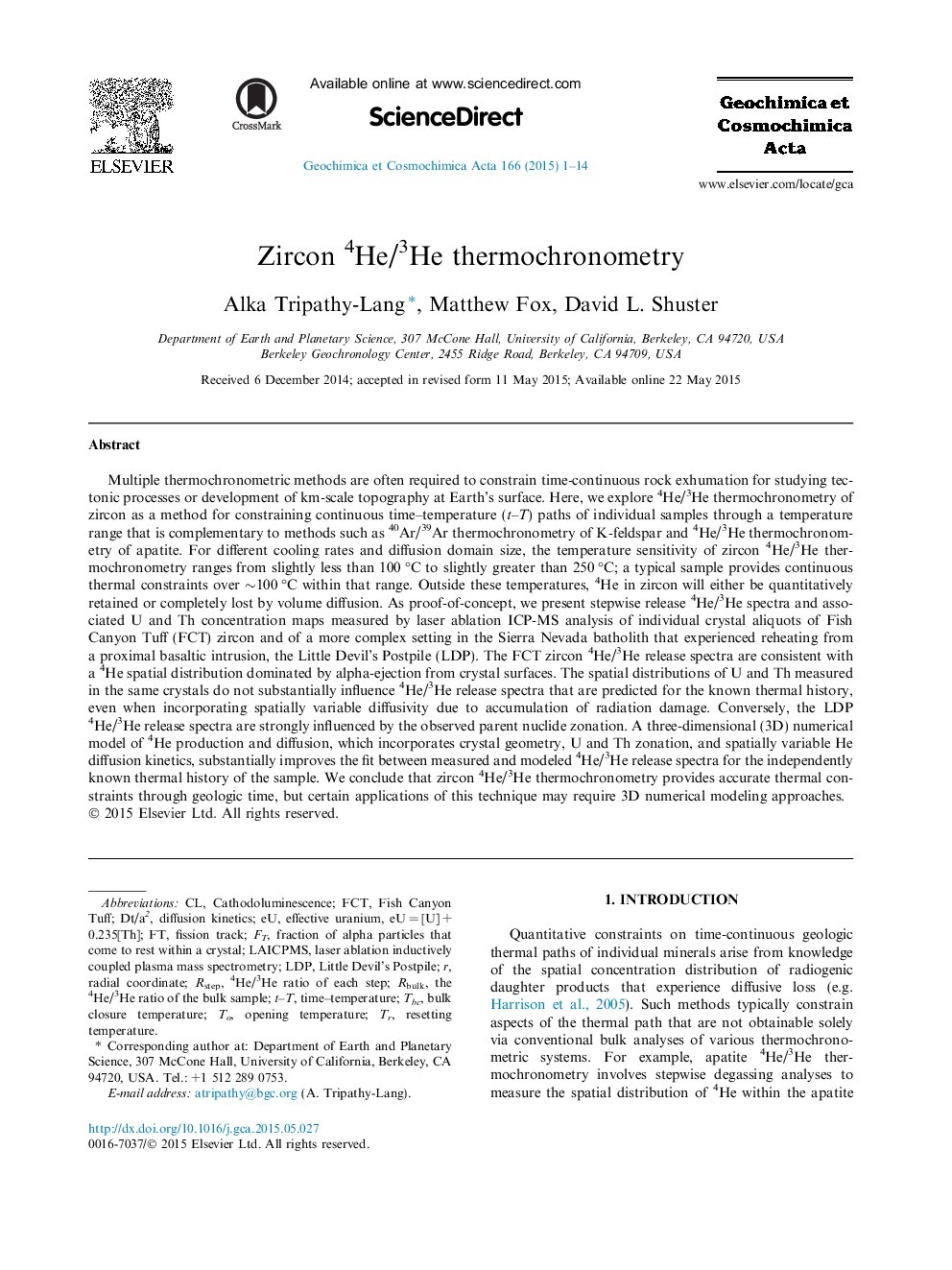| Article ID | Journal | Published Year | Pages | File Type |
|---|---|---|---|---|
| 6437798 | Geochimica et Cosmochimica Acta | 2015 | 14 Pages |
Abstract
Multiple thermochronometric methods are often required to constrain time-continuous rock exhumation for studying tectonic processes or development of km-scale topography at Earth's surface. Here, we explore 4He/3He thermochronometry of zircon as a method for constraining continuous time-temperature (t-T) paths of individual samples through a temperature range that is complementary to methods such as 40Ar/39Ar thermochronometry of K-feldspar and 4He/3He thermochronometry of apatite. For different cooling rates and diffusion domain size, the temperature sensitivity of zircon 4He/3He thermochronometry ranges from slightly less than 100 °C to slightly greater than 250 °C; a typical sample provides continuous thermal constraints over â¼100 °C within that range. Outside these temperatures, 4He in zircon will either be quantitatively retained or completely lost by volume diffusion. As proof-of-concept, we present stepwise release 4He/3He spectra and associated U and Th concentration maps measured by laser ablation ICP-MS analysis of individual crystal aliquots of Fish Canyon Tuff (FCT) zircon and of a more complex setting in the Sierra Nevada batholith that experienced reheating from a proximal basaltic intrusion, the Little Devil's Postpile (LDP). The FCT zircon 4He/3He release spectra are consistent with a 4He spatial distribution dominated by alpha-ejection from crystal surfaces. The spatial distributions of U and Th measured in the same crystals do not substantially influence 4He/3He release spectra that are predicted for the known thermal history, even when incorporating spatially variable diffusivity due to accumulation of radiation damage. Conversely, the LDP 4He/3He release spectra are strongly influenced by the observed parent nuclide zonation. A three-dimensional (3D) numerical model of 4He production and diffusion, which incorporates crystal geometry, U and Th zonation, and spatially variable He diffusion kinetics, substantially improves the fit between measured and modeled 4He/3He release spectra for the independently known thermal history of the sample. We conclude that zircon 4He/3He thermochronometry provides accurate thermal constraints through geologic time, but certain applications of this technique may require 3D numerical modeling approaches.
Keywords
Related Topics
Physical Sciences and Engineering
Earth and Planetary Sciences
Geochemistry and Petrology
Authors
Alka Tripathy-Lang, Matthew Fox, David L. Shuster,
